- Home
- Oliver Sacks
Everything in Its Place
Everything in Its Place Read online
ALSO BY OLIVER SACKS
Migraine
Awakenings
A Leg to Stand On
The Man Who Mistook His Wife for a Hat
Seeing Voices
An Anthropologist on Mars
The Island of the Colorblind
Uncle Tungsten
Oaxaca Journal
Musicophilia
The Mind’s Eye
Hallucinations
On the Move
Gratitude
The River of Consciousness
THIS IS A BORZOI BOOK PUBLISHED BY ALFRED A. KNOPF AND ALFRED A. KNOPF CANADA
Copyright © 2019 by the Oliver Sacks Foundation
All rights reserved. Published in the United States by Alfred A. Knopf, a division of Penguin Random House LLC, New York, and in Canada by Alfred A. Knopf Canada, a division of Penguin Random House Canada Limited, Toronto.
www.aaknopf.com
www.penguinrandomhouse.ca
www.oliversacks.com
Knopf, Borzoi Books, and the colophon are registered trademarks of Penguin Random House LLC. Knopf Canada and colophon are trademarks of Penguin Random House Canada Ltd.
Owing to limitations of space, permissions and previously published credits appear on page 265.
Library of Congress Cataloging-in-Publication Data
Names: Sacks, Oliver, 1933–2015, author.
Title: Everything in its place : first loves and last tales / by Oliver Sacks.
Description: First edition. | New York : Alfred A. Knopf, 2019. | “This is a Borzoi Book.”
Identifiers: LCCN 2018022660 (print) | LCCN 2018043210 (ebook) | ISBN 9780451492890 (hardcover) | ISBN 9780451492906 (ebook)
Subjects: LCSH: Sacks, Oliver, 1933–2015. | Neurologists—Biography.
Classification: LCC RC339.52.S23 (ebook) | LCC RC339.52.S23 A29 2019 (print) | DDC 616.80092 [B]—dc23
LC record available at https://lccn.loc.gov/2018022660
Library and Archives Canada Cataloguing in Publication
Sacks, Oliver, 1933–2015, author
Everything in its place : first loves and last tales / Oliver Sacks.
Issued in print and electronic formats.
ISBN 978-0-345-81138-7
eBook ISBN 978-0-345-81140-0
1. Sacks, Oliver, 1933–2015. 2. Neurologists—England—Biography.
3. Neurologists—United States—Biography. I. Title.
RC339.52.S23A3 2019 616.80092 C2018-903947-7
C2018-903948-5
Ebook ISBN 9780451492906
Cover photograph by Bill Hayes
Cover design by Carol Devine Carson
v5.4
ep
Contents
Cover
Also by Oliver Sacks
Title Page
Copyright
FIRST LOVES
Water Babies
Remembering South Kensington
First Love
Humphry Davy: Poet of Chemistry
Libraries
A Journey Inside the Brain
CLINICAL TALES
Cold Storage
Neurological Dreams
Nothingness
Seeing God in the Third Millennium
Hiccups and Other Curious Behaviors
Travels with Lowell
Urge
The Catastrophe
Dangerously Well
Tea and Toast
Telling
The Aging Brain
Kuru
A Summer of Madness
The Lost Virtues of the Asylum
LIFE CONTINUES
Anybody Out There?
Clupeophilia
Colorado Springs Revisited
Botanists on Park
Greetings from the Island of Stability
Reading the Fine Print
The Elephant’s Gait
Orangutan
Why We Need Gardens
Night of the Ginkgo
Filter Fish
Life Continues
Bibliography
Permissions and Acknowledgments
A Note About the Author
First Loves
Water Babies
We were all water babies, my three brothers and I. Our father, who was a swimming champ (he won the fifteen-mile race off the Isle of Wight three years in succession) and loved swimming more than anything else, introduced each of us to the water when we were scarcely a week old. Swimming is instinctive at this age, so, for better or worse, we never “learned” to swim.
I was reminded of this when I visited the Caroline Islands, in Micronesia, where I saw even toddlers diving fearlessly into the lagoons and swimming, typically, with a sort of dog paddle. Everyone there swims, nobody is “unable” to swim, and the islanders’ swimming skills are superb. Magellan and other navigators reaching Micronesia in the sixteenth century were astounded at such skills and, seeing the islanders swim and dive, bounding from wave to wave, could not help comparing them to dolphins. The children, in particular, were so at home in the water that they appeared, in the words of one explorer, “more like fish than human beings.” (It was from the Pacific Islanders that, early in the twentieth century, we Westerners learned the crawl, the beautiful, powerful ocean stroke that they had perfected—so much better, so much more fitted to the human form than the froglike breaststroke chiefly used until that time.)
For myself, I have no memory of being taught to swim; I learned my strokes, I think, by swimming with my father—though the slow, measured, mile-eating stroke he had (he was a powerful man who weighed nearly eighteen stone) was not entirely suited to a little boy. But I could see how my old man, huge and cumbersome on land, became transformed—graceful, like a porpoise—in the water; and I, self-conscious, nervous, and also rather clumsy, found the same delicious transformation in myself, found a new being, a new mode of being, in the water. I have a vivid memory of a summer holiday at the seaside in England the month after my fifth birthday, when I ran into my parents’ room and tugged at the great whalelike bulk of my father. “Come on, Dad!” I said. “Let’s come for a swim.” He turned over slowly and opened one eye. “What do you mean, waking an old man of forty-three like this at six in the morning?” Now that my father is dead, and I am almost twice the age he was then, this memory of so long ago tugs at me, makes me equally want to laugh and cry.
Adolescence was a bad time. I developed a strange skin disease: “erythema annulare centrifugum,” said one expert; “erythema gyratum perstans,” said another—fine, rolling, orotund words, but neither of the experts could do anything, and I was covered in weeping sores. Looking, or at least feeling, like a leper, I dared not strip at a beach or pool, and could only occasionally, if I was lucky, find a remote lake or tarn.
At Oxford, my skin suddenly cleared, and the sense of relief was so intense that I wanted to swim nude, to feel the water streaming over every part of me without hindrance. Sometimes I would go swimming at Parson’s Pleasure, a bend of the Cherwell, a preserve since the 1680s or earlier for nude bathing, and peopled, one felt, by the ghosts of Swinburne and Clough. On summer afternoons, I would take a punt on the Cherwell, find a secluded place to moor it, and then swim lazily for the rest of the day. S
ometimes at night I would go for long runs on the towpath by the Isis, past Iffley Lock, far beyond the confines of the city. And then I would dive in and swim in the river, till it and I seemed to flow together, become one.
Swimming became a dominant passion at Oxford, and after this there was no going back. When I came to New York, in the mid-1960s, I started to swim at Orchard Beach in the Bronx, and would sometimes make the circuit of City Island—a swim that took me several hours. This, indeed, is how I found the house I lived in for twenty years: I had stopped about halfway around to look at a charming gazebo by the water’s edge, got out and strolled up the street, saw a little red house for sale, was shown round it (still dripping) by the puzzled owners, walked along to the real estate agent and convinced her of my interest (she was not used to customers in swim trunks), reentered the water on the other side of the island, and swam back to Orchard Beach, having acquired a house in midswim.
I tended to swim outside—I was hardier then—from April through November, but would swim at the local Y in the winter. In 1976–77, I was named Top Distance Swimmer at the Mount Vernon Y, in Westchester: I swam five hundred lengths—six miles—in the contest and would have continued, but the judges said, “Enough! Please go home.”
One might think that five hundred lengths would be monotonous, boring, but I have never found swimming monotonous or boring. Swimming gives me a sort of joy, a sense of well-being so extreme that it becomes at times a sort of ecstasy. There is a total engagement in the act of swimming, in each stroke, and at the same time the mind can float free, become spellbound, in a state like a trance. I have never known anything so powerfully, so healthily euphoriant—and I am addicted to it, fretful when I cannot swim.
Duns Scotus, in the thirteenth century, spoke of “condelectari sibi,” the will finding delight in its own exercise; and Mihaly Csikszentmihalyi, in our own time, speaks about “flow.” There is an essential rightness about swimming, as about all such flowing and, so to speak, musical activities. And then there is the wonder of buoyancy, of being suspended in this thick, transparent medium that supports and embraces us. One can move in water, play with it, in a way that has no analogue in the air. One can explore its dynamics, its flow, this way and that; one can move one’s hands like propellers or direct them like little rudders; one can become a little hydroplane or submarine, investigating the physics of flow with one’s own body.
And, beyond this, there is all the symbolism of swimming—its imaginative resonances, its mythic potentials.
My father called swimming “the elixir of life,” and certainly it seemed to be so for him: he swam daily, slowing down only slightly with time, until the grand age of ninety-four. I hope I can follow him, and swim till I die.
Remembering South Kensington
I have loved museums as far back as I can remember. They have played a central role in my life in stimulating the imagination and showing me the order of the world in vivid, concrete form, but in a tidy form, in miniature. I love botanical gardens and zoos for the same reason: they show one nature, but nature classified, the taxonomy of life. Books are not real in this sense; they are only words. Museums provide arrangements of the real, exemplars of nature.
The four grand South Kensington museums—all within the same plot of land and all built in the same High Victorian baroque style—were conceived as a single, many-aspected unity, a way of making natural history and science and the study of human cultures public and accessible to everybody.
The South Ken museums (along with the Royal Institution and its popular Christmas Lectures) were a unique Victorian educational institution, and they still represent for me, as they did in childhood, the essence of museumhood.
There was the Natural History Museum, the Geology Museum, the Science Museum, and the Victoria and Albert Museum, devoted to cultural history. I was a science type and never went to the V&A, but the other three I regarded as a single museum and I went to them constantly, on free afternoons, on weekends, on holidays, whenever I could. I resented being shut out of them when they were closed, and one night I contrived to stay in the Natural History Museum, hiding myself at closing time in the Fossil Invertebrate Gallery (not as well guarded as the Dinosaur Gallery or the Whales) and spending an enchanted night alone in the museum, wandering from gallery to gallery with a flashlight. Familiar animals became fearful, uncanny, as I prowled that night, their faces suddenly looming out of the darkness or hovering ghostlike at the periphery of the flashlight. The museum, lightless, was a place of delirium, and I was not wholly sorry when morning came.
I had many friends in the Natural History Museum—Cacops and Eryops, giant fossil amphibians whose skulls featured a hole for a third, pineal eye; the cubomedusan jellyfish Charybdea, the lowliest animal with nerve ganglia and eyes; the beautiful blown-glass models of Radiolaria and Heliozoa—but my deepest love, my special passion, was for the cephalopods, of which there was a magnificent collection.
I would spend hours looking at the squids: Sthenoteuthis caroli, stranded on the coast of Yorkshire in 1925, or the exotic, soot-black Vampyroteuthis (only a wax model here, alas), a rare abyssal form with an umbrella-like web between the tentacles, spangled with brilliant, luminous stars in its folds. And, of course: Architeuthis, the emperor of giant squids, locked in mortal embrace with a whale.
But it was not just the giants, the exotica, that held my attention. I loved, especially in the insect and mollusk galleries, to open the study drawers beneath the cases to see all the varieties, the markings, of a single species or shell, and how each variety had its own, favored geographical location. I could not, like Darwin, go to the Galápagos and compare finches on every island, but I could do the next best thing in the museum. I could be a vicarious naturalist, an imaginary traveler with a ticket to the whole world, without leaving South Kensington.
And sometimes, after the museum staff got to know me, I would be let through a massive locked door into the private realm of the new Spirit Building, where the real work of the museum was done: receiving and sorting specimens from all over the world, examining them, dissecting them, identifying new species—and sometimes preparing them for special exhibits. (One such was the coelacanth, the newly discovered “living fossil” fish Latimeria, a creature supposed extinct since the Cretaceous.) I spent days on end in the Spirit Building before going up to Oxford; my friend Eric Korn spent an entire year there. We were all in love with taxonomy in those days—we were Victorian naturalists at heart.
I loved the old-fashioned glass-and-mahogany look of the museum and was furious when, in my university days in the 1950s, it got all modern and gaudy and started installing trendy exhibits. (It eventually went interactive.) Another friend, Jonathan Miller, shared my disgust as well as my nostalgia. “I have a great hankering for that sepia-tinted era,” he once wrote to me. “I long endlessly for the whole place suddenly to be plunged into the gritty monochrome of 1876.”
Outside the Natural History Museum was a pleasant garden, presided over by trunks of Sigillaria, a long-extinct fossil tree, and a miscellany of Calamites. I was drawn to this, to fossil botany, with an almost painful intensity; if Jonathan was nostalgic for the gritty monochrome of 1876, I wanted the green monochrome, the fern and cycad forests of the Jurassic. I even dreamed at night, as an adolescent, of giant woody club mosses and tree horsetails, primeval giant gymnosperm forests enveloping the globe—and would wake furious to think that they had long since disappeared, the world taken over by brightly colored, up-to-date modern flowering plants.
From the Jurassic fossil garden of the Natural History Museum it was scarcely a hundred yards to the Geology Museum, a museum virtually deserted at all times, as far as I could see. (Sadly, this museum no longer exists; its collection has been incorporated into the Natural History Museum.) It was full of special treasures, secret pleasures, for the knowing, patient eye. There was a giant crystal of antimony sulfide, stibnite, from
Japan. It stood six feet high, a crystalline phallus, a totem, and it fascinated me in a peculiar, almost reverential way. There was phonolite, a sonorous mineral from Devils Tower in Wyoming; the keepers of the museum, once they got to know me, would let me strike it with the palm of my hand, and it would emit a dull but gonglike and reverberant boom, as if one had hit the sounding board of a piano.
I loved the sense here of a nonliving world—the beauty of crystals, the sense that they were built of identical atomic lattices, perfect. But if they were perfect, mathematics incarnate, they also stirred me with their sensuous beauty. I spent hours studying pale yellow crystals of sulfur and mauve crystals of fluorite—clustered, gemlike, like a mescaline vision—and, at the other extreme, the strange “organic” forms of kidney ore, hematite, looking so much like the kidneys of giant animals that I would wonder for a moment which museum I was in.
But finally I would always go back to the Science Museum, for this was the first one I had ever been to. My mother had sometimes brought my brothers and me here even before the war, when I was a child. She would lead us through the magical galleries—the early airplanes, the dinosaur-like machines of the Industrial Revolution, the old optical contrivances—to a smaller gallery at the top where there was a reconstruction of a coal mine with the original equipment. “Look!” she would say. “Look there!” And she’d direct our gaze to an old mining lamp. “My father, your grandfather, invented that!” she would say, and we would bend our heads and read: “The Landau lamp, invented by Marcus Landau in 1869. It displaced the earlier Humphry Davy lamp.” Whenever I read this, it excited me strangely and gave me a sense of a personal bond to the museum and to my grandfather (born in 1837 and long since dead), the sense that he and his invention were still somehow real and alive.

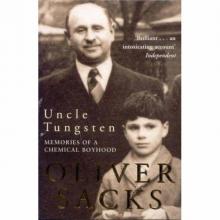 Uncle Tungsten
Uncle Tungsten Oaxaca Journal
Oaxaca Journal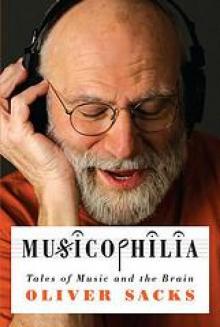 Musicophilia
Musicophilia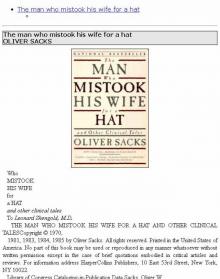 The man who mistook his wife for a hat
The man who mistook his wife for a hat 1989 - Seeing Voices
1989 - Seeing Voices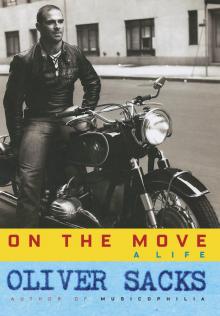 On the Move: A Life
On the Move: A Life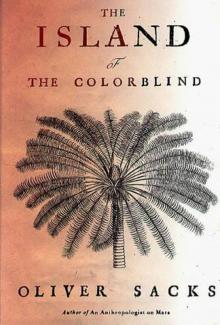 1996 - The Island of the Colorblind
1996 - The Island of the Colorblind An Anthropologist on Mars: Seven Paradoxical Tales
An Anthropologist on Mars: Seven Paradoxical Tales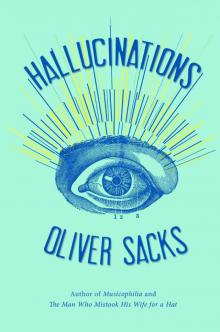 Hallucinations
Hallucinations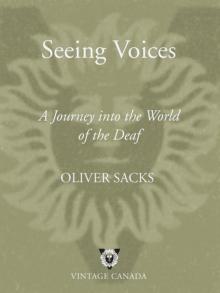 Seeing Voices
Seeing Voices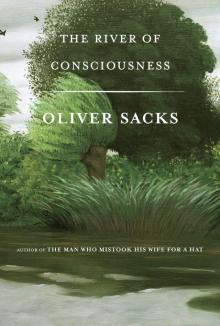 The River of Consciousness
The River of Consciousness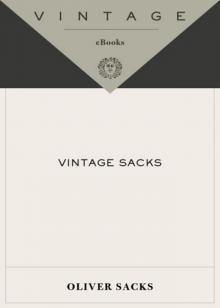 Vintage Sacks
Vintage Sacks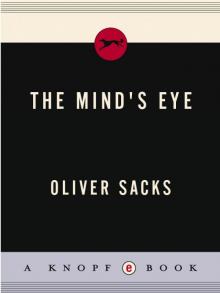 The Mind's Eye
The Mind's Eye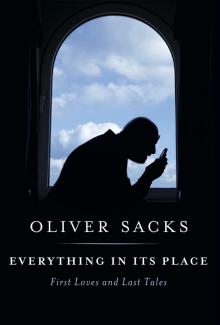 Everything in Its Place
Everything in Its Place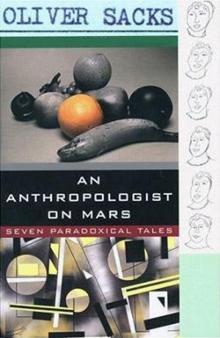 An Anthropologist on Mars (1995)
An Anthropologist on Mars (1995)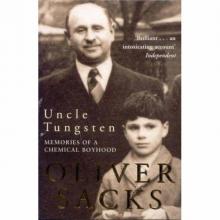 Uncle Tungsten: Memories of a Chemical Boyhood (2001)
Uncle Tungsten: Memories of a Chemical Boyhood (2001)